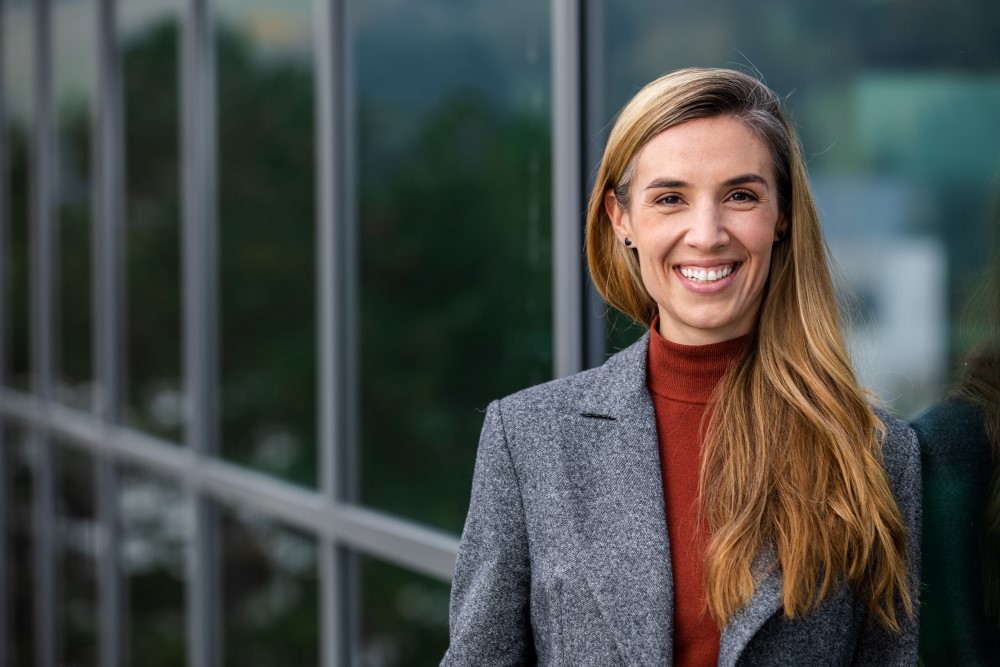April 23, 2024
Two ISTA Physicists Admitted to the Young Academy of the Austrian Academy of Sciences
With Kimberly Modic and Hryhoriy Polshyn, ISTA counts seven members in ÖAW body
The two assistant professors Kimberly Modic and Hryhoriy Polshyn from the Institute of Science and Technology Austria (ISTA) have been accepted into the Young Academy of the Austrian Academy of Sciences (ÖAW). The Young Academy consists of up to 70 excellent young scientists from various disciplines—seven of whom are now from ISTA. Their aim is to strengthen innovative research and promote young researchers in the country.
The ÖAW society of scholars consists of three pillars: the philosophical-historical class, the mathematical-scientific class, and the Young Academy.
The members of the Young Academy—up to 70 younger but already established academics—are identified based on the research funding or scholarships they have received. They are then admitted by election of the Young Academy and confirmation by the Academy as a whole. Membership of the Young Academy then lasts for a period of eight years.
As part of the Young Academy, researchers are actively involved in strengthening innovative research and promoting young scientists. To this end, the Young Academy has comprehensive participation rights. Physicists Kimberly Modic and Hryhoriy Polshyn from ISTA are now also members of this body.
Kimberly Modic
Kimberly Modic has been leading a research group at ISTA as an assistant professor since 2020. She received her PhD in physics from the University of Texas, then worked both at the Pulsed Field Facility of the National High Magnetic Field Laboratory in the USA and as a postdoc at the Max Planck Institute for Chemical Physics of Solids in Dresden, Germany.

Her research group at ISTA is working on the thermodynamics of quantum materials on a microscale. Determining or measuring the properties of these materials is extremely difficult. The Modic group combines state-of-the-art sample preparation with customized thermodynamic investigations. In 2022, Modic received a 2.32 million euro Starting Grant from the European Research Council (ERC) to discover the properties of quantum materials and thus advance the field of quantum computing, among other things.
Hryhoriy Polshyn
Hryhoriy Polshyn joined ISTA in 2022 as Assistant Professor. Previously, he received his PhD in physics from the University of Illinois Urbana-Champaign and worked as a postdoc at the University of California.

At the Institute in Klosterneuburg, he is now researching electronic phenomena in 2D materials—i.e. materials that are only one atom thick. Graphene and other so-called van der Waals materials open up exciting possibilities for 2D electronic systems. His research provides the physical background for conceptually new electronic components and quantum bits, or qubits for short. In 2023, Polshyn received a 1.83 million euro ERC Starting Grant from the European Research Council for his research on electrons in stacked 2D materials.
ISTA has seven members in the Young Academy
Both new members will now contribute their expertise to the Young Academy. In total, seven ISTA research group leaders are represented in this “youth committee” of the Austrian Academy of Sciences. In 2022, ISTA Assistant Professor Edouard Hannezo — working at the interface of cell biology and theoretical physics — was admitted to the Young Academy. ISTA physicists Scott Waitukaitis (since 2021) and Mikhail Lemeshko (since 2020), chemist Stefan Freunberger, and biologist Beatriz Vicoso (both since 2017) are also part of the committee.



